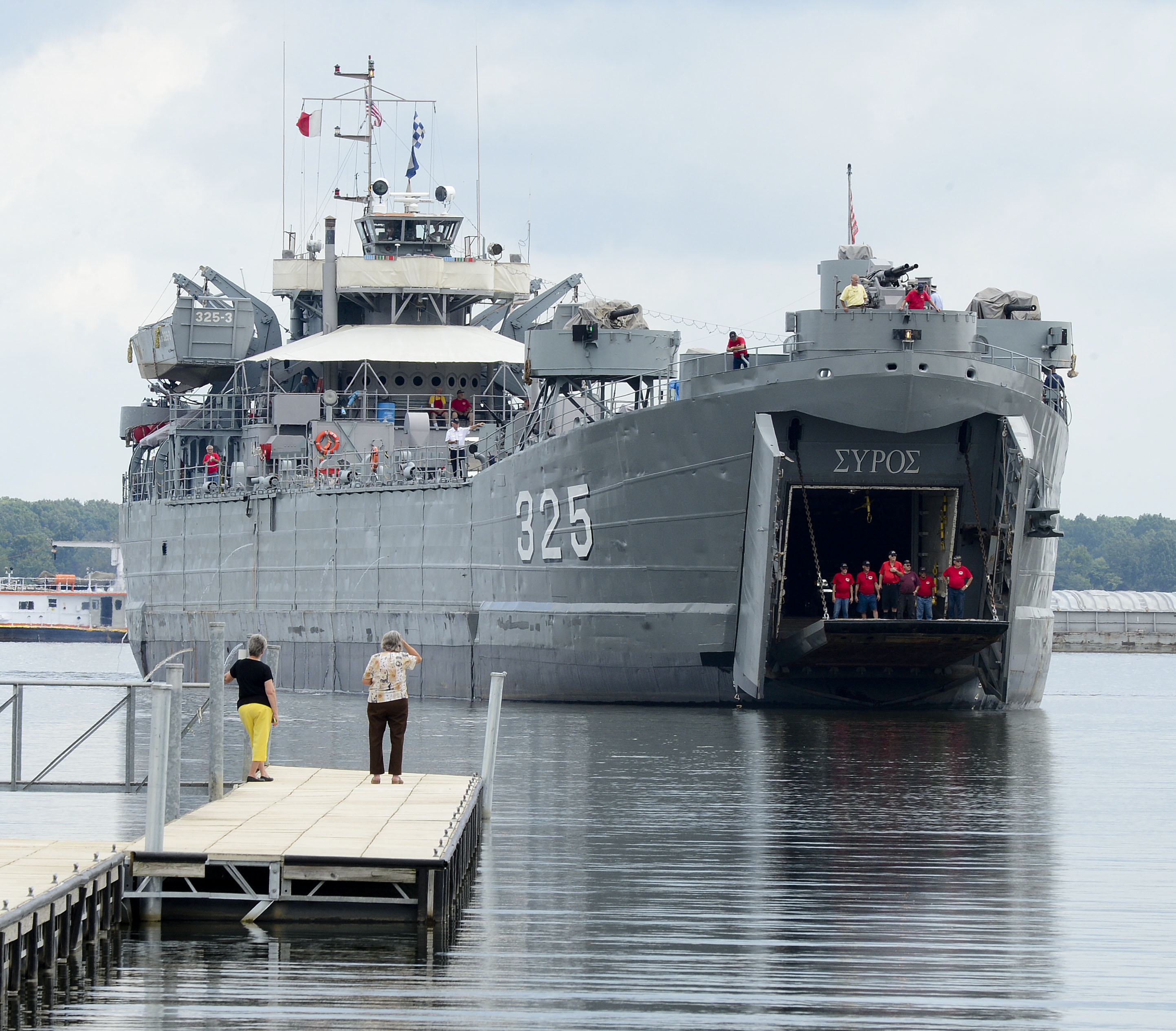IF YOU GO• What: USS LST 325 tours• When: The ship will arrive between 8 and 8:30 a.m. Thursday, with a 2 p.m. ceremony planned on board. Tours will run Friday through Sept. 17, 9 a.m. to 5 p.m.• Where: Ross's Landing• Admission: $10 for adults, $5 for children ages 6-17, free for children 5 and under. Admission is $20 for a family of two adults and two children.• More info: lstmemorial.orgSource: LST Memorial
She was never as lethal as a destroyer nor as magnificent as an aircraft carrier. But what the LST lacked in brute force and sex appeal, it more than made up for in pure utility.
The amphibious LSTs -- short for Landing Ship, Tank -- carried tanks, military vehicles, artillery and supplies into the heart of battle during World War II, the Vietnam War and the Korean War.
Now the USS LST 325, the last surviving ship of its kind, is making its way up the Tennessee River with plans to dock in the Scenic City. The floating museum will dock at Ross's Landing on Thursday morning and open for tours Friday until Sept. 17.
The LST 325 launched in October 1942. Between June 1944 and April 1945, the ship made 43 trips between England and France. Most notably, it landed on Omaha Beach in Normandy on D-Day, June 6, 1944.
"This ship actually participated and landed troops and battle-ready equipment right there on Omaha Beach," said Mickey McCamish of the Southeast Tennessee Veterans Coalition. "To have this piece of history visiting our city is just a tremendous opportunity for all of us, young and old."
And the ship's Sept. 11 landing was scheduled intentionally.
"It was done purposely on that date just as a reminder of the freedoms that we have," he said. "And it was ships like the LST 325 and the men aboard that ship that enabled us to have the freedoms we have today."
The ship is generally docked in Evansville, Ind., for about 11 months each year with an annual summer cruise to two cities. This year, Chattanooga's stop follows Decatur, Ala.
A crew of volunteers, most of them veterans, mans the ship for each cruise and lives, works and keeps watch just as the crew would have done in the ship's wartime years.
The 330-foot ship has an angled bottom that is higher in the bow end than the stern. The main deck is a sweeping 200-by-50-foot expanse.
"It looks like a shoe box to be honest with you," said Bob Hargrove, the captain's assistant. "It's totally flat-bottomed."
The 70-year-old vessel has been completely restored.
"It's as original as we can keep it and keep it operational," Hargrove said. "Everything you see looks like it would have in World War II."
The LST's design, the brainchild of Winston Churchill, Great Britain's wartime prime minister, allowed LSTs to pull up directly onto beaches, where their massive 3-ton front doors made for easy unloading of tanks, vehicles and cargo. Their size allowed them to transport as many as 20 Sherman tanks at one time.
"The tide goes out and they just sit down at the beach and unload their stuff," Hargrove said.
That's what made these ships unique -- and so prized -- during wartime. The LST was the largest vessel that could beach itself, said Larry Decuers, a curator at the National World War II Museum in New Orleans. Logistically speaking, it was invaluable.
"That's what fascinates me: How do you move all this material across an ocean and onto an enemy shore?" Decuers said. "And to me, that's a lot sexier than the actual enemy combat."
During war, the LST 325 carried more than 100 men. Today's restored version still takes a crew of about 50 volunteers. As they cruise the Tennessee River, the volunteers use the same bunks, mess and commodes that seamen used 70 years ago.
Chattanoogan James Caldwell, 80, is taking his first cruise aboard the USS LST 325. He got interested in the ship on an RV trip to Indiana and has made two trips back to work on its restoration and maintenance.
Caldwell served in the Army in the 1950s, so the idea of working on a giant ship was foreign to him. On the cruise, he's assigned to work the deck. He sleeps and works in four-hour shifts. Most of the guys volunteering are former Navy men. Two men aboard even served in World War II. The quarters are cramped. And though the captain stressed the importance of getting along early on, everyone is working and living together famously, Caldwell said.
"You're living on a ship that's a city unto itself," he said.
Contact staff writer Kevin Hardy at khardy@timesfreepress.com or 423-757-6249.


